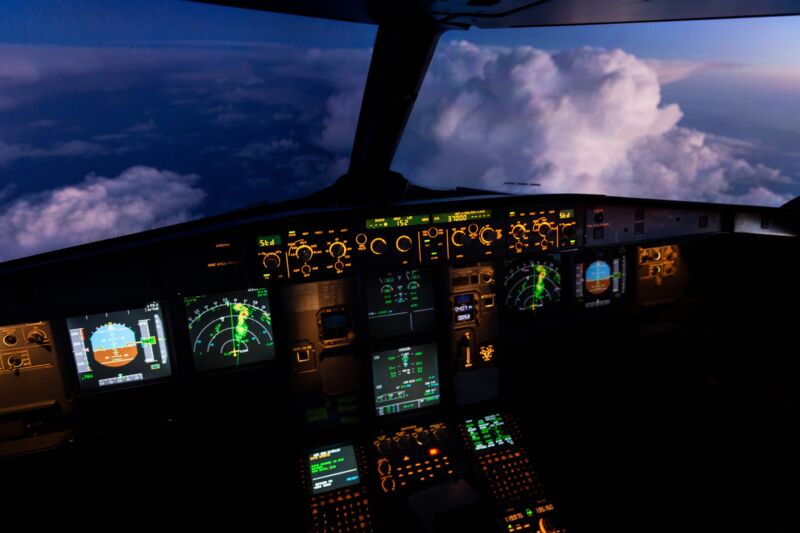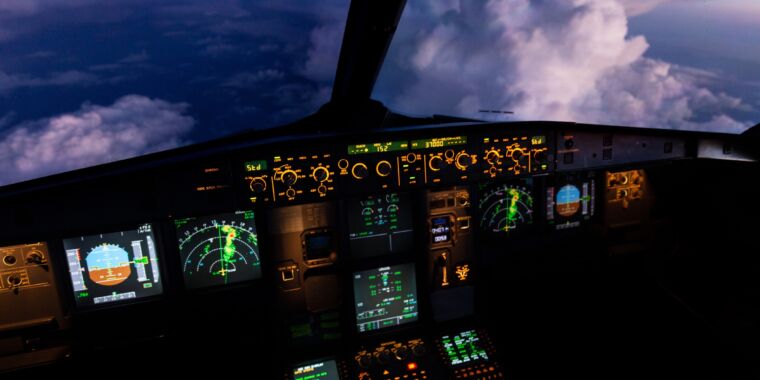
Getty Images | Skyhobo
The Federal Aviation Administration’s fight against AT&T’s and Verizon’s new 5G deployment appears to be coming to a temporary close, with the FAA having cleared about 78 percent of US planes for landing in low-visibility conditions. Airline CEOs are striking an upbeat tone, with one saying the process of ensuring that airplane altimeters work in 5G areas is “really not that complicated.”
Over the past week, the FAA announced clearances for 13 altimeters that can filter out 5G transmissions from the C-band spectrum that is licensed to wireless operators, accounting for those used by all Boeing 717, 737, 747, 757, 767, 777, 787, and MD-10/-11 models; all Airbus A300, A310, A319, A320, A330, A340, A350, and A380 models; and some Embraer 170 and 190 regional jets. More approvals will presumably be announced soon, bringing the US closer to 100 percent capacity.
Unfortunately, there could be another showdown in about six months, when AT&T and Verizon lift temporary 5G restrictions around airports—we’ll cover that later in this article. For now, airline CEOs appear to be satisfied, even though the FAA hasn’t said definitively that altimeters will continue working after the temporary 5G limits around airports are lifted.
No “material disruption going forward”
“It’s taken a while to get to the right spot, but I feel like we’re in the right spot,” American Airlines Doug Parker said yesterday, according to a CNN article. “I don’t think you’re going to see any material disruption going forward because of this.”
“While I wish it happened earlier, the good news is we now have everyone engaged, the FAA and DOT at the highest levels, the… aircraft manufacturers, airlines, and the telecoms,” United Airlines CEO Scott Kirby said. “While we don’t have a final resolution quite yet, I’m confident we’ll get there.”
“The technical experts that are working on it tell us it’s really not that complicated once they all are able to share information and work on it,” Parker also said. “So they seem encouraged that we’ll be able to address this in a way that allows for full deployment of 5G, including near airports. I don’t expect until we get to the point that everyone is really comfortable that you’ll see anything turned on near airports, because no one wants to go through this again.”
These statements marked a sudden shift, coming just three days after Parker and Kirby signed a letter claiming that 5G on the C-band would cause “catastrophic disruption” to air travel.
FAA waited almost two years to test altimeters
The biggest recent development is that the FAA finally started a process to evaluate and approve altimeters after claiming without proof that 5G on C-Band spectrum (3.7 to 3.98 GHz) would disrupt altimeters that use spectrum from 4.2 GHz to 4.4 GHz. While the Federal Communications Commission created a 220 MHz guard band to protect airplane equipment, poorly built altimeters may be unable to filter out transmissions from other spectrum bands.
The FAA didn’t start its process of evaluating the actual altimeters used by airplanes after February 2020, when the Federal Communications Commission approved the use of C-Band spectrum for 5G. The FAA also didn’t start this evaluation process after the FCC auctioned off the spectrum to wireless carriers in February 2021. Instead, the FAA continued arguing that 5G deployment should be blocked long after carriers started preparing their equipment and towers to use the C-band.
Harold Feld, a long-time telecom attorney and senior VP of consumer-advocacy group Public Knowledge, told Ars today that the FAA should have started setting up the process to evaluate altimeters shortly after the FCC approved the use of the spectrum for 5G—or, at the very latest, shortly after the $81 billion spectrum auction went forward.
“They spent their time relitigating the whole thing,” Feld said. “It was rash and reckless for the FAA to proceed without any kind of plan B. Had not Secretary [of Transportation Pete] Buttigieg personally intervened and the White House personally intervened and forced the FAA to actually stand this process up, then they still wouldn’t have stood it up on their own.”
FCC deemed C-band safe to use
Nearly two years ago, the FCC found that C-band spectrum was safe to use, in part because T-Mobile showed that airline-industry research did not investigate whether interference would occur in any realistic scenario. Still, the FCC imposed power limits in the 220 MHz guard band—which is actually 400 MHz this year because carriers are not yet deploying on the upper part of their licensed spectrum. C-band spectrum is also being used for 5G in about 40 other countries without reports of interference to altimeters.
“[W]ell-designed equipment should not ordinarily receive any significant interference (let alone harmful interference) given these circumstances,” the FCC said when it approved 5G usage with the 220 MHz guard band. The FCC also pointed out that the 220 MHz guard band “is double the minimum guard band requirement discussed in initial comments by Boeing and ASRC [Aviation Spectrum Resources].”








